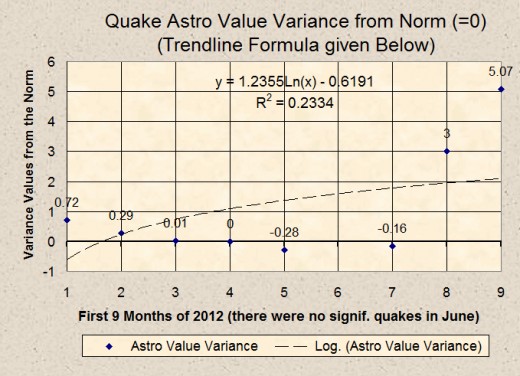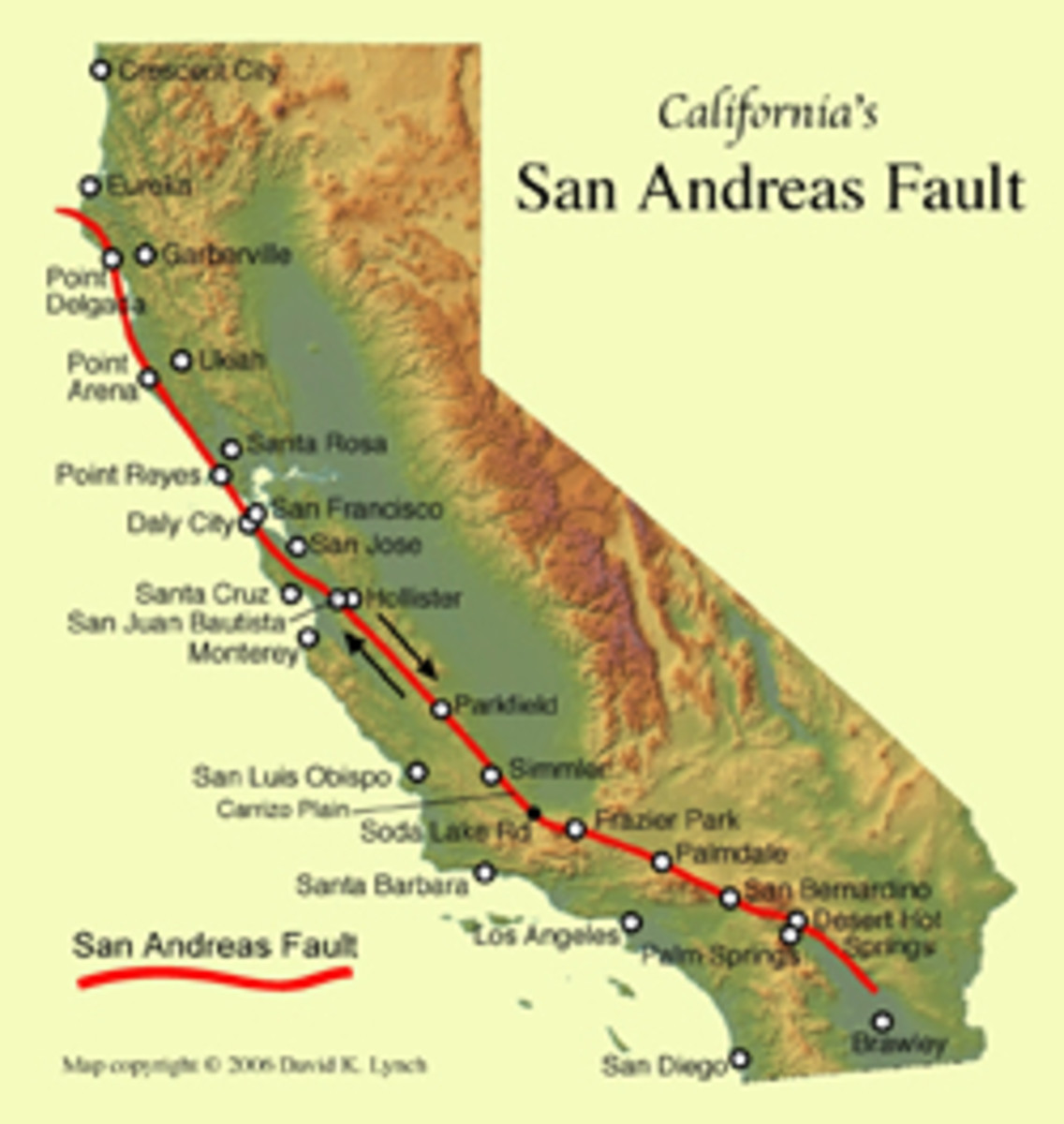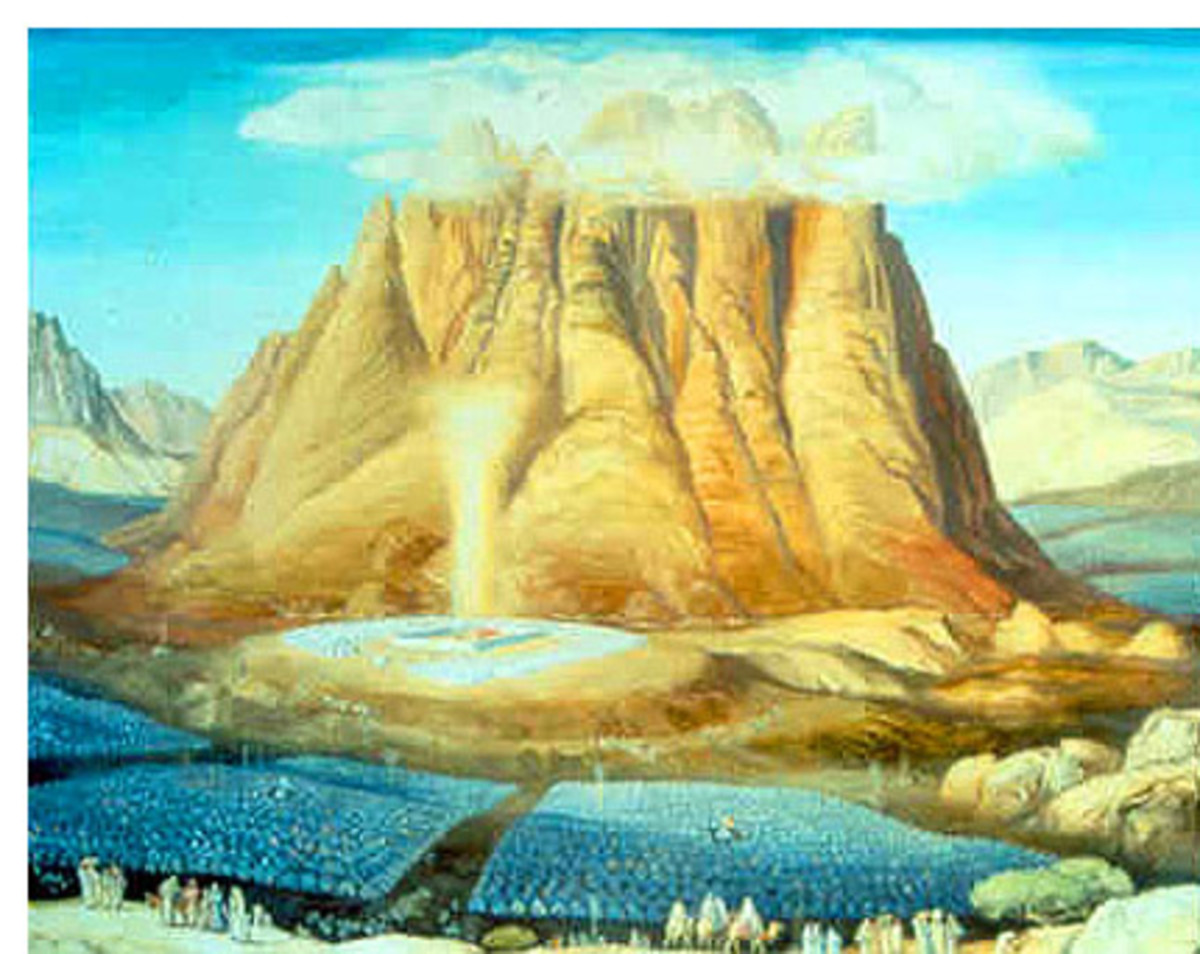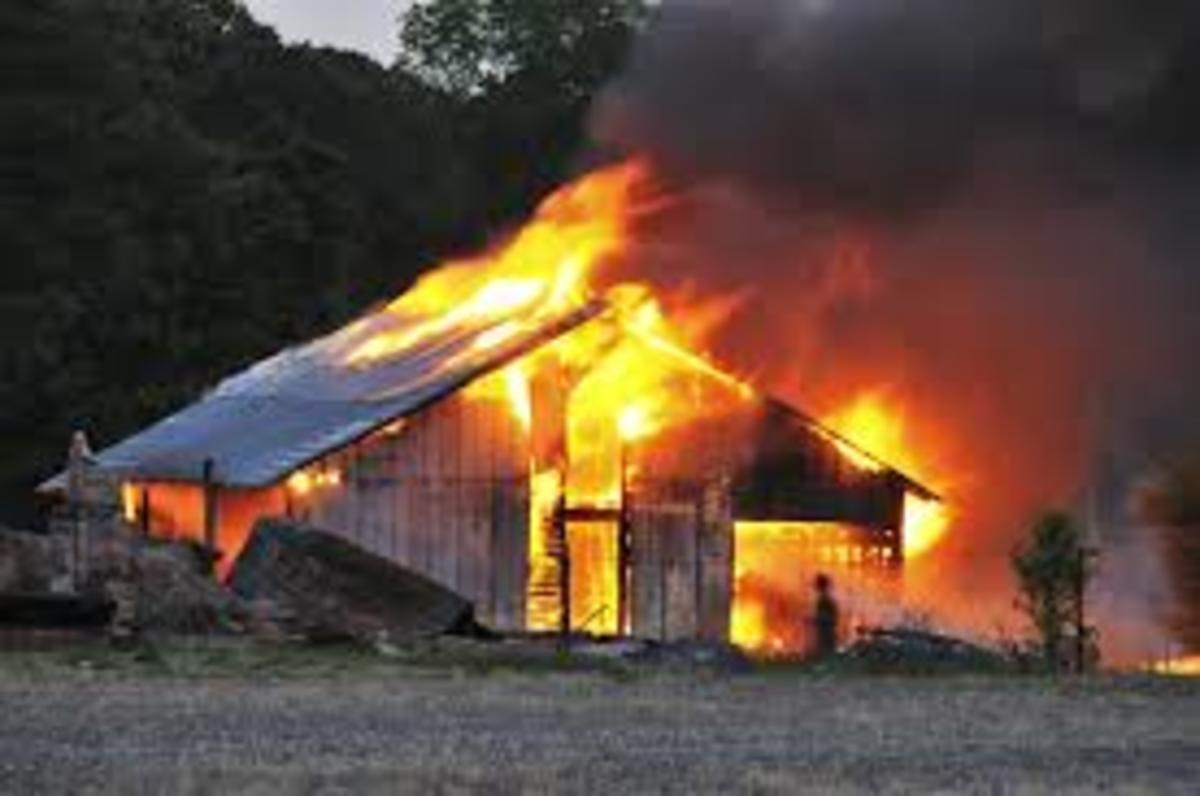Many Astrologically Linked Quakes On the Horizon

I have been comparing the possibilities of this month (October 2012) to those of the prior month and the month after and decided that this month wasn't as good a candidate for having the stars represent the timing of earthquake activity. Last month had about the same average influence in theory but the peaks were higher than in this month so it is not as surprising that I did well in my prognosticating before the only two significant quakes landed inside my narrower than this months windows for likely activity.
So if I strike out in October 2012 it would not be that surprising. As one can see in the chart above, November in theory at least is a strong contender for snaring some quakes within the windows that represent astrological aspects that tend to parallel significant earthquakes. As for the rest of October 2012, there is a possibility for significant earthquake activity within one last window. Like my last predicted window, I am not feeling as confident as I would like that any strong earthquake(s) of prominence will be felt somewhere within this final window of the month, but never-the-less, let's go on with the show.
What this window has going for it is a final (possibly a knock-out) punch. Like the last one, it starts off with a fairly wide period of influence (give or take 72 hours) centered on 10/26/12 at 0200UT, with a peak one day later (10/27/12 at 0300UT but also a secondary peak at 10/26/12 at 1430UT). It begins on 10/23/12 at 0200UT and ends on 10/29/12 at 0200UT. Here's where the punch comes in. Just about at the same time as one wide window closes another smaller one begins on 10/29/12 at 0615UT, when the Moon enters Taurus. Interestingly, it not only begins at 0615UT on 10/29/12, but it peaks at the same time. That is why the word “punch” is such an apt term in this case (since it is at maximum strength at the start rather than gradually increasing towards that point). The median for this last window is at 2015UT on 10/29, give or take 14 hours. Since the edges of a window are fuzzy and I usually add one hour before the calculated start and add three hours after the end of a window, these two windows actually are stitched together and it is thus really one large window beginning on 10/23/12 at 0200UT and ending on 10/30/12 at 1115UT (median of 10/26/12 at 1837UT give or take 3 days 16hrs 37mins).
Possible locations for the first of these two back-to-back periods are focused on Afghanistan or Turkey, Peru or Venezuela, and Algeria or Indonesia, and in the USA, Alaska or Missouri. For the second part of this period the most likely locations for a significant earthquake would be in Italy or Greece, Pakistan, Argentina, Columbia, or Nicaragua, and China, and in the USA, California or Alaska.
Although this upcoming window series has peaks a bit less prominent than the last one predicted, this second “punch” effect as well as astrological aspects that I feel are more promising than the last time spell a bit more confidence than I had with the last window. However, November is another story entirely... But first let me now say a few words about the prior part of this month, now that my mid month window as well as the first window at the beginning of the month has passed.
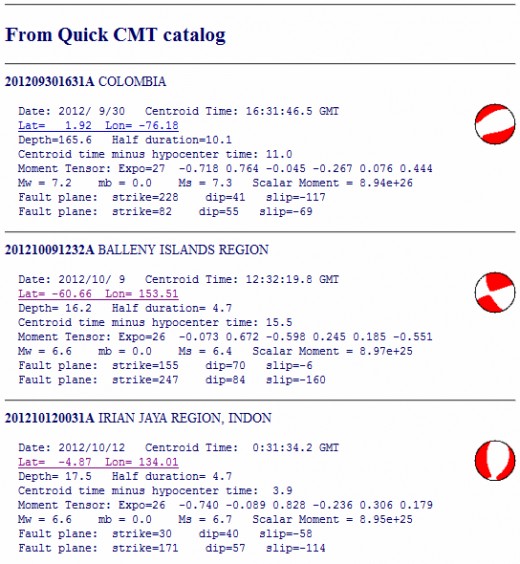
Firstly, there was a significant earthquake that fell within the first window of the month but, although that window peaked in the month of October, it opened up in late September. A 7.2 magnitude quake in Colombia occurred 17.5 hours into that 52 hour wide window (or 7.5 hours before it would have been October). Secondly, their were two 6.6 magnitude earthquakes that fell outside my windows for October but, although they were above the 6.5 magnitude bar that I have set in the past as defining a significant earthquake, I am now considering a more flexible definition that would remove that distinction from them. Another factor that I believe needs to be considered is not only how big they were but where they occurred as well. The first quake of 10/9/12 was located between New Zealand and Antarctica and the second one of 10/12/12 in Indonesia near the southwest shore of New Guinea. These earthquakes occurred in areas where I now believe significance is measured by a higher standard. In other words, since quakes in various parts of the world have their own magnitude signature each Country should have its own bar level that defines the minimum magnitude requirements for significance. For example, some places like Italy, Greece, Iran, or Turkey have their largest quakes in the 7.8-8.1 magnitude range, and Japan, Indonesia, Alaska, or Chile are known to have quakes measuring over 8.9 on the magnitude scale. Thus the first countries listed with quakes usually no higher than around 8.0 magnitude should have a low bar of from 6.3-6.7 (depending on the country) and the countries that are capable of producing 9.0 or higher magnitude quakes would have their low bar in the 7.1-7.3 range (see the list below for other examples).
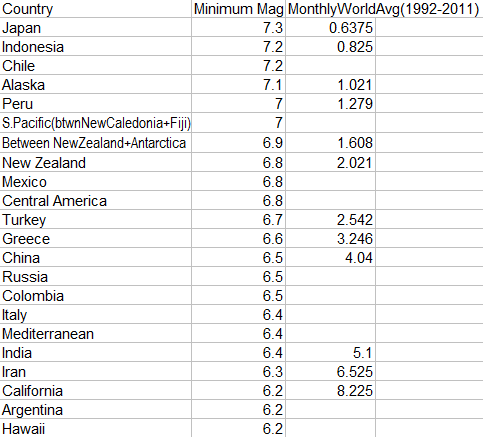
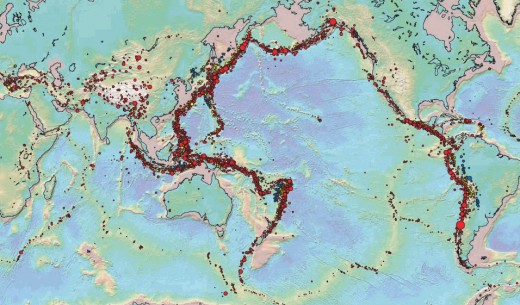
Put another way, as can be seen on the seismic map of the world, California, although known as the most seismically active state in the continental U.S., is only moderately so when compared to other countries that border the ring of fire around the edge of the Pacific Ocean. So, a 6.2 magnitude quake in California (or at the low end of the quakes that qualify as significant there based on the above list), although significant locally, would be considered a very common occurrence and thus less significant in places such as Japan, Alaska, Indonesia, or Chile. An earthquake as high as 7.0 would also likely be considered not quite a significant event in these later countries (they would perhaps be noticed no more than a 6.0 quake in California would).
Lastly, I wish to point out that my earlier standard of using only 6.5 magnitude or higher earthquakes as those worthy of the label of “significant”, turns out to be exactly the average for the 6.2 to 7.3 magnitude range that I am considering now (there are roughly the same number of earthquakes of 6.2-6.4 magnitude as there are 6.6 or higher).
November, as I said earlier, should likely produce more than the usual number of significant earthquakes. If we are just talking about those of 6.5 magnitude or greater, there should be more than four (or more than the average number). September only had two significant quakes and they both fell within my predicted windows. For November I am expecting at least three to fall within my predicted windows. And here are the windows that comprise 47% of the time frame for the month of November:
-
Peaks at 2230UT on 11/3, starting at 1840UT on 11/2 and ending at 1930UT on 11/4 (centered at 1905UT on 11/3, give or take 12h25m).
-
Peaks at 1315UT on 11/13, starting at 1352UT on 11/11 and ending at 1245UT on 11/15 (centered on 1319UT on 11/13, give or take 23h26m or almost exactly the same time as the peak!).
-
Peaks at 0505UT on 11/17, starting at 1905UT on 11/16 and ending at 1455UT on 11/17 (centered on 0500UT on 11/16, give or take 9h55m and again almost exactly the same time as the peak!).
-
Peaks at 0015UT on 11/20, starting at 1920UT on 11/19 and ending at 0710UT on 11/20 (centered at 0115UT on 11/20, give or take 5h55m).
-
Peaks at 1515UT on 11/25, starting at 1638UT on 11/22 and ending at 1720UT on 11/27 (centered at 0459UT on 11/25 give or take 2d12h21m); peak spread out over many hours.
-
Peaks at 0415UT on 11/30, starting at 0230UT on 11/29 and ending at 2115UT on 11/30 (centered at 2352UT on 11/29 give or take 11h22m).
Now, if there were nothing to astrological aspects mirroring significant earthquake activity, and there are four quakes of 6.5 (the monthly average) or greater during November 2012, only two of those should fall within the projected windows (the chances based on statistical probability). I am expecting at least three to fall within these windows, but more likely I think there will be at least four (the month should have at least five such quakes overall and I'm expecting six).
Now here is the breakdown for the locations for each of the corresponding windows given above:
-
China; Uzbekistan or Kyrgyztan or Turkey, and for the USA, Alaska or California.
-
Turkey or Pakistan; Italy; Japan; Algeria, and for the USA, same as above.
-
Italy; Pakistan or Iran or Afghanistan or Tajikistan; Algeria, and in the USA, Calif. or Alaska.
-
Turkey or Iran; China; Japan; Colombia/Venezuela; Spain/Portugal, and Calif. Or Hawaii in US.
-
Iran or Pakistan or India; Indonesia or Philippines; Colombia or Argentina or Peru or Ecuador or Venezuela; Japan, and in the USA, California, Alaska, or Missouri.
-
Japan; Greece; Venezuela; Iran, and in the USA, California or Missouri.
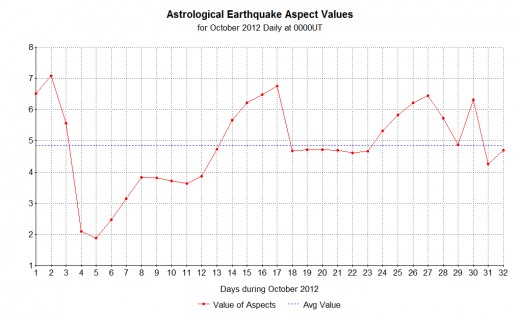
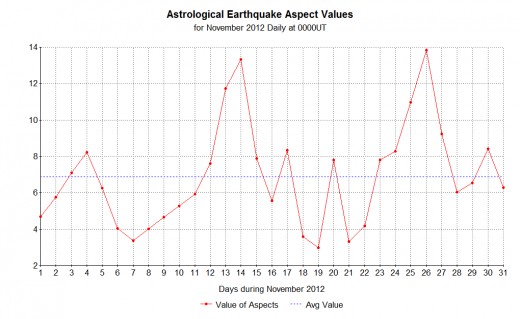
As can be seen in the above charts, I have chosen to utilize the average value line for each month to determine the base of each peak and thus the length of its period. By doing this it is possible that the time ranges for each window will be larger than it need be and cause whatever significance is achieved to be reduced. I have decided to use these wide windows for now until I've settled on a formula that will decrease the length of each window to a size that fits the data better. That is if it becomes needed; things may turn out to be just right the way they are.
In closing, below is a representation of just how well I have or rather would have been doing if I had been utilizing my present methods that I began using at the start of September 2012. As I've said before, I'm not expecting much earthquake action in October 2012 that astrology was a part of, but November could very well show twice the number of significant earthquakes than is usual with two thirds to four fifths of them within the projected windows that I have laid out above.
